Sustainable Yakisugi Deep Dive:
Harmonizing Aesthetics and Responsibility
Sustainable Yakisugi Deep Dive:
Harmonizing Aesthetics and Responsibility
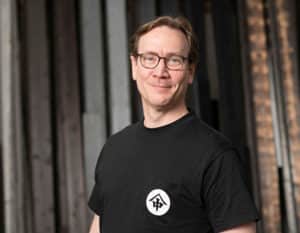
Martin Gottschlich
What makes Yakisugi / Shou Sugi Ban the most ecological and sustainable material option?
Yakisugi is a traditional Japanese technique used to beautify and extend the lifespan of wood, achieved through natural means – fire, without the use of chemical wood preservatives. To discover the benefits of Yakisugi, why it makes wood more durable, and what constitutes a “proper” Yakisugi treatment, read on.
In this article, we will delve into the various aspects of sustainable Yakisugi production and explain why it is a responsible choice for environmentally conscious consumers and construction professionals.
Key aspects to consider are:
- Wood as a renewable building material and CO2 sink
- Sustainably sourced wood resources
- Ecological manufacturing process
- Longevity – considering the product lifecycle
- Certifications and standards
Wood as a renewable building material and CO2 sink
Among the primary building materials in Europe such as concrete, brick, steel, glass, asphalt, plaster, natural stone, and wood, only wood stands out as a renewable natural resource, conserving natural resources. Additionally, wood is significantly less energy-intensive in its production compared to most other materials like steel, brick, or concrete.
Forests play a vital role in combatting climate change by absorbing and storing substantial amounts of carbon from the atmosphere. Our sustainably managed forests serve as a carbon sink, contributing to the reduction of greenhouse gases. By using Yakisugi wood, consumers and construction professionals help maintain the forests’ integrity, ensuring they continue to function as CO2 reservoirs.
A cubic meter of wood weighs an average of 500 kg with half of it composed of carbon. That means 250 kg of carbon are contained in a cubic meter of wood. When converting carbon to CO2 (oxidation), approximately 3.67 kg of CO2 are generated from one kg of carbon. Thus, 250 kg of carbon yield 917 kg of CO2, equivalent to approximately 1 tonne of CO2 per cubic meter of wood.
Sustainably sourced wood
Many of the forests planted at the company’s inception are now over 60 years old. The company mainly uses wood, which is replanted after harvesting. By avoiding clear-cutting, Nakamoto Forestry can offer high-value products, aiming for forest management over a 100-year period.
Sustainable forestry practices can also positively impact biodiversity, as well-managed forests can provide a habitat for various plant and animal species. The philosophy of sustainable forestry is deeply ingrained in Nakamoto Forestry’s DNA.
Nakamoto Forestry operates its own nursery for raising new saplings and shoots, along with its forest office responsible for maintaining their forests. This includes activities like pruning, thinning, and removing broken branches or snow to protect and care for their trees.
The company’s forest management also carries the responsibility of environmental preservation in the region. Many of their forests are located in the headwaters of the Ota River. When working near mountain streams, they take measures to prevent sediments from flowing in and damaging water resources downstream. Additionally, attention is paid to the forest floor vegetation to reduce soil erosion. In planted forests, areas where understory vegetation is not growing are promptly thinned to allow vegetation to recover.
The Senryo Mountain, managed by Nakamoto Zourin, holds high value as a model forest. Approximately half of Senryo Mountain is covered by a natural mixed forest of deciduous trees and natural cypress, with a portion designated as a special mother forest to preserve the Hachirou-Sugi mother tree. Serving as a valuable forest narrating the history of the Chugoku Mountains from ancient times, this forest is used for training and education of wood groups, government agencies, and research institutions.
The company’s management philosophy is highly esteemed beyond its boundaries, receiving the “Emperor’s Cup” in the forestry category at the Festival of Agriculture, Forestry, and Fisheries in November 1989.


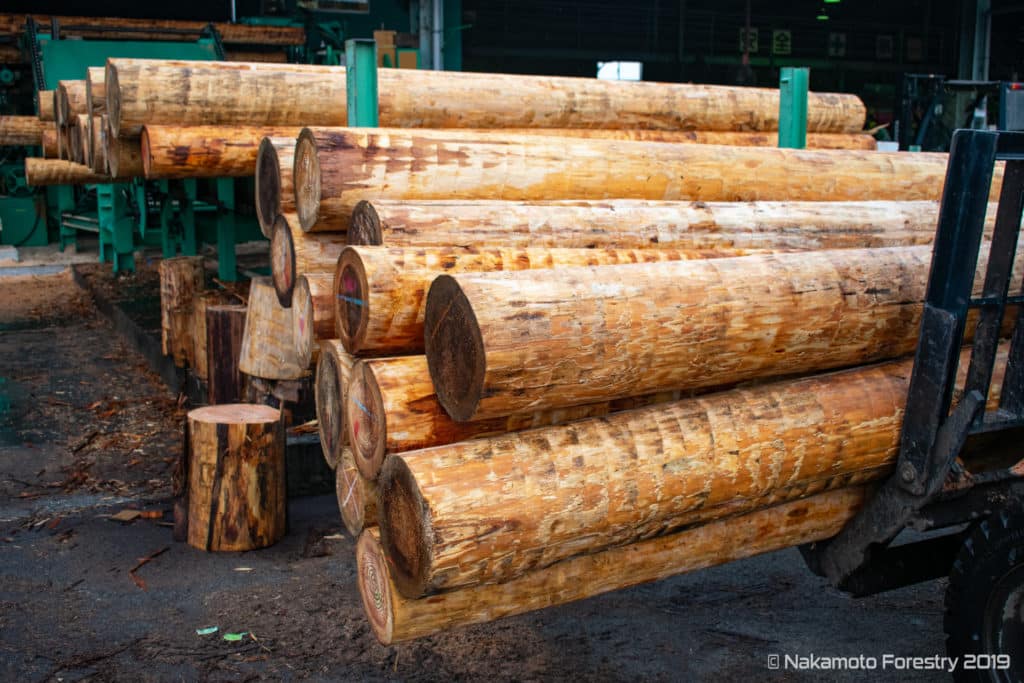
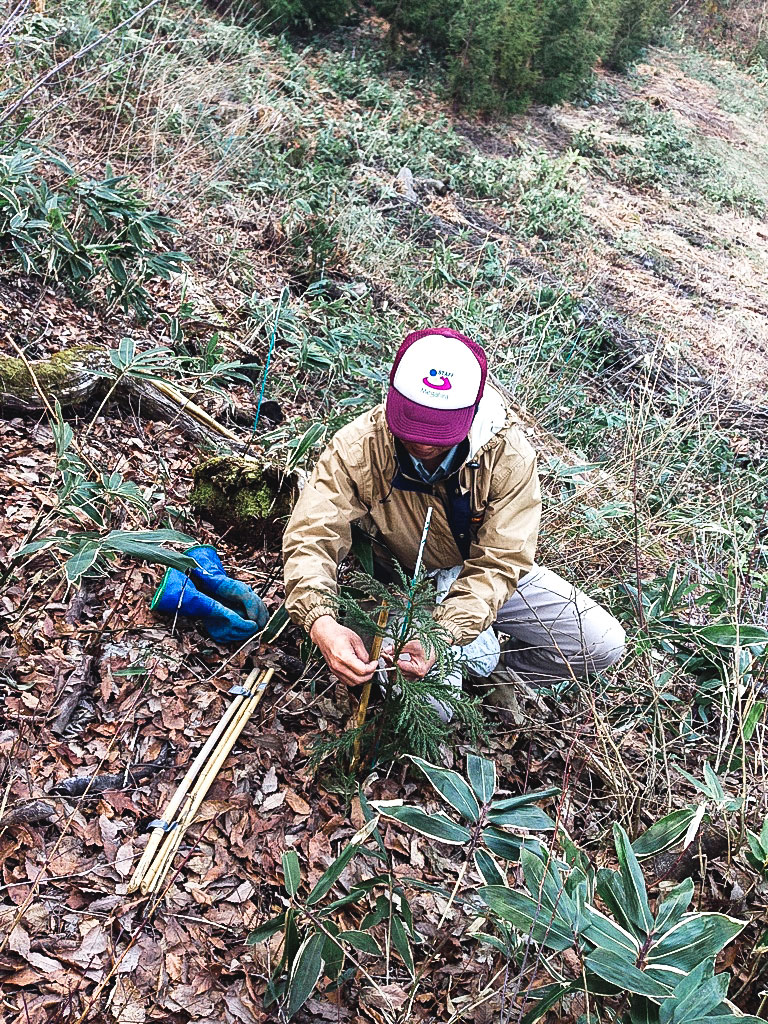
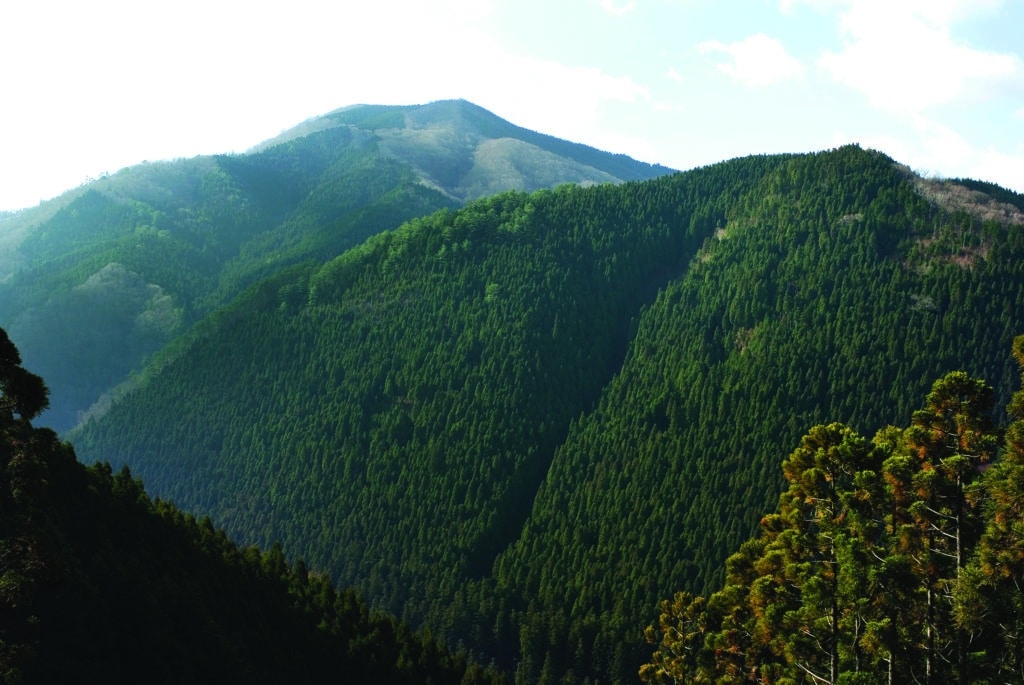
Sustainable manufacturing process
The production of Yakisugi wood traditionally involves charring the wood surface. A sustainable manufacturing process aims to reduce energy consumption, minimize harmful emissions, and use resources efficiently. Nakamoto Forestry relies on renewable energy sources such as solar power or biomass to meet the energy requirements during the manufacturing process. Sawdust and scraps from wood processing are converted into wood chips or pellets. Additionally, modern machinery is employed to reduce water and resource consumption.
Before charring, the wood needs to be dried to approximately 10-14% residual moisture. Overly moist wood cannot carbonize properly, meaning it cannot create a stable, long-lasting layer of soot and charcoal. Instead of the energy-intensive kiln drying common in Europe and some Japanese manufacturers, Nakamoto Forestry has relied solely on air and sun drying for generations. While this process may take several weeks to months, depending on the season, it ensures a gentler treatment of the wood, resulting in better wood quality while also saving considerable energy that would have been used to heat drying ovens.
Another crucial aspect is the avoidance of harmful chemicals during the charring process. Traditionally, Yakisugi is produced without the use of chemicals, relying solely on the power of fire, making it an environmentally friendly choice. Nakamoto Forestry has been following this tradition for generations.
Continuous efforts to reduce co2 emissions
All our activities have been assessed by an independent university research institute in terms of their CO2 emissions, considering the entire process from forest work to transportation, sawmill operations, and charring. According to their calculations, a total of 2.1 kg of CO2 equivalents are emitted per square meter. Considering that our Yakisugi wood binds approximately 15 kg of CO2 equivalents per square meter due to the carbon sequestration in the wood (based on 1 m3 = 1 tonne CO2), our products ultimately contribute to a CO2 reduction of more than 10 kg per square meter.
In our production processes, we take great care to increase efficiency and to avoid consumption of energy. For instance, we use afterburner engineering in our kilns which reduce use of natural gas resources.
Longevity - considering the product lifecycle
A lifecycle assessment (LCA) considers all environmental impacts of a product or material throughout its entire lifecycle, including resource extraction, manufacturing, use, disposal, and potentially recycling or reuse. From this perspective, we can better understand and compare the overall environmental impacts of a building material.
Yakisugi timber is renowned for its exceptional durability and resistance to weather, moisture, and pests. Charring the wood surface makes it resistant to decay, insect infestation, and fungi. This means that Yakisugi wood typically requires less frequent replacement, resulting in less waste and a reduced demand for new resources. While traditional larch facades generally have an average lifespan of 20-30 years, Yakisugi facades are estimated to last 60-80 years in Japan – some Yakisugi facades have even remained intact for over 100 years.
Not only does Yakisugi contribute over 10 kg of CO2 reduction per square meter through carbon sequestration in the wood, but its significantly longer lifespan also makes it ecologically and economically superior to comparable facade alternatives.
Certifications and standards
To ensure the sustainability of Yakisugi wood, certifications and adherence to sustainable standards play a crucial role.
Our forests and forest resources in Hiroshima Prefecture have been SGEC-certified (Sustainable Green Ecosystem Council) since 2006 and PEFC-certified (Programme for the Endorsement of Forest Certification) since 2019. Nakamoto Forestry jointly established the Ota-gawa SGEC Network with other forestry companies in the region to promote activities that increase the value of forests and create a circular-oriented regional society utilizing local resources.
Furthermore, not only our forests but our entire supply chain is PEFC-certified. Following our American colleagues in 2018, our European organization also obtained the Chain-of-Custody (CoC) certification in 2020, which assesses the entire product chain from the forest through our processing in Japan to transportation to our central warehouse in Europe, demonstrating compliance with all relevant sustainability regulations.
Additional certifications we have obtained as part of our sustainability efforts include EPD declarations (Type III Environmental Product Declaration) for all our product lines, providing a comprehensive assessment of our products’ environmental impacts, as well as our certification as a recognized forestry company, in accordance with Japanese forestry laws for sustainable forestry.
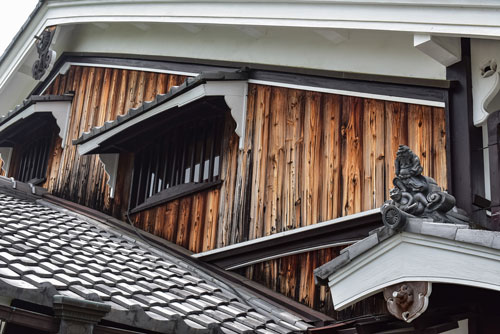
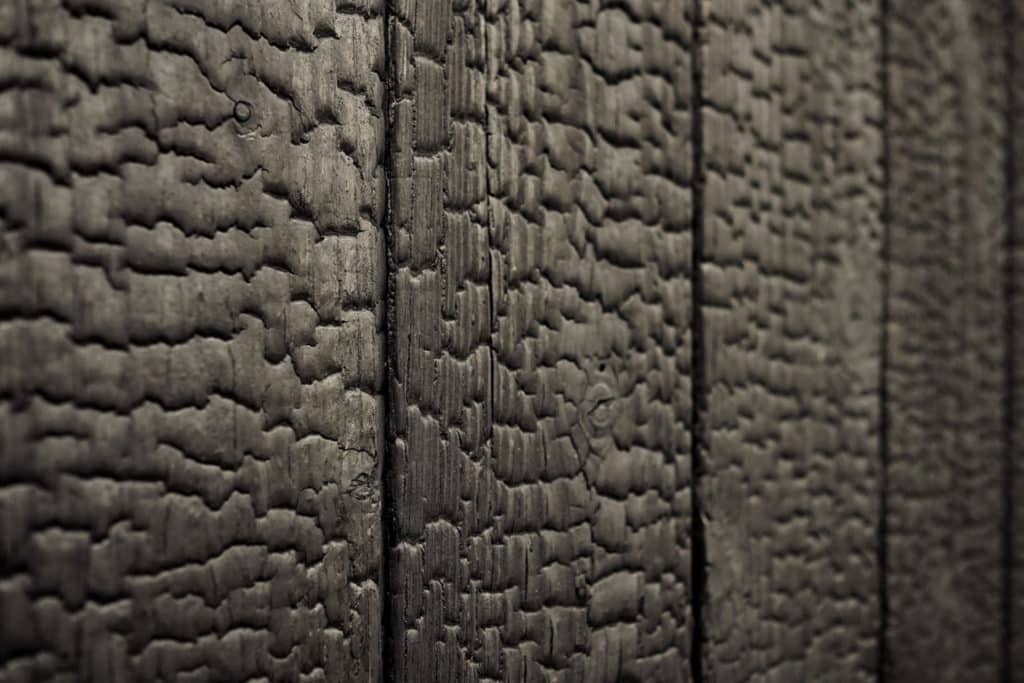

 EU (English)
EU (English) DE (Deutsch)
DE (Deutsch) FR (Français)
FR (Français) UK (English)
UK (English)

